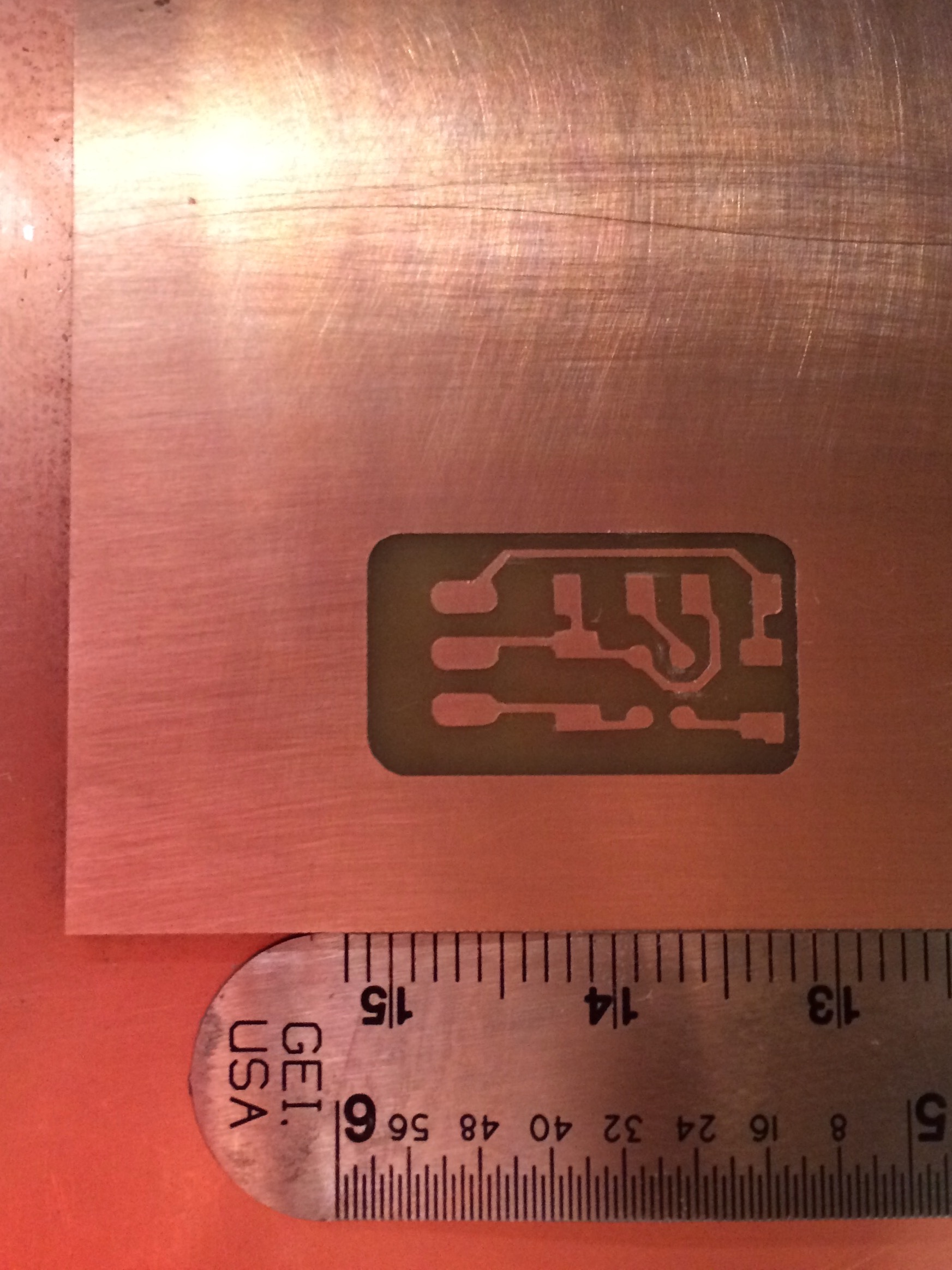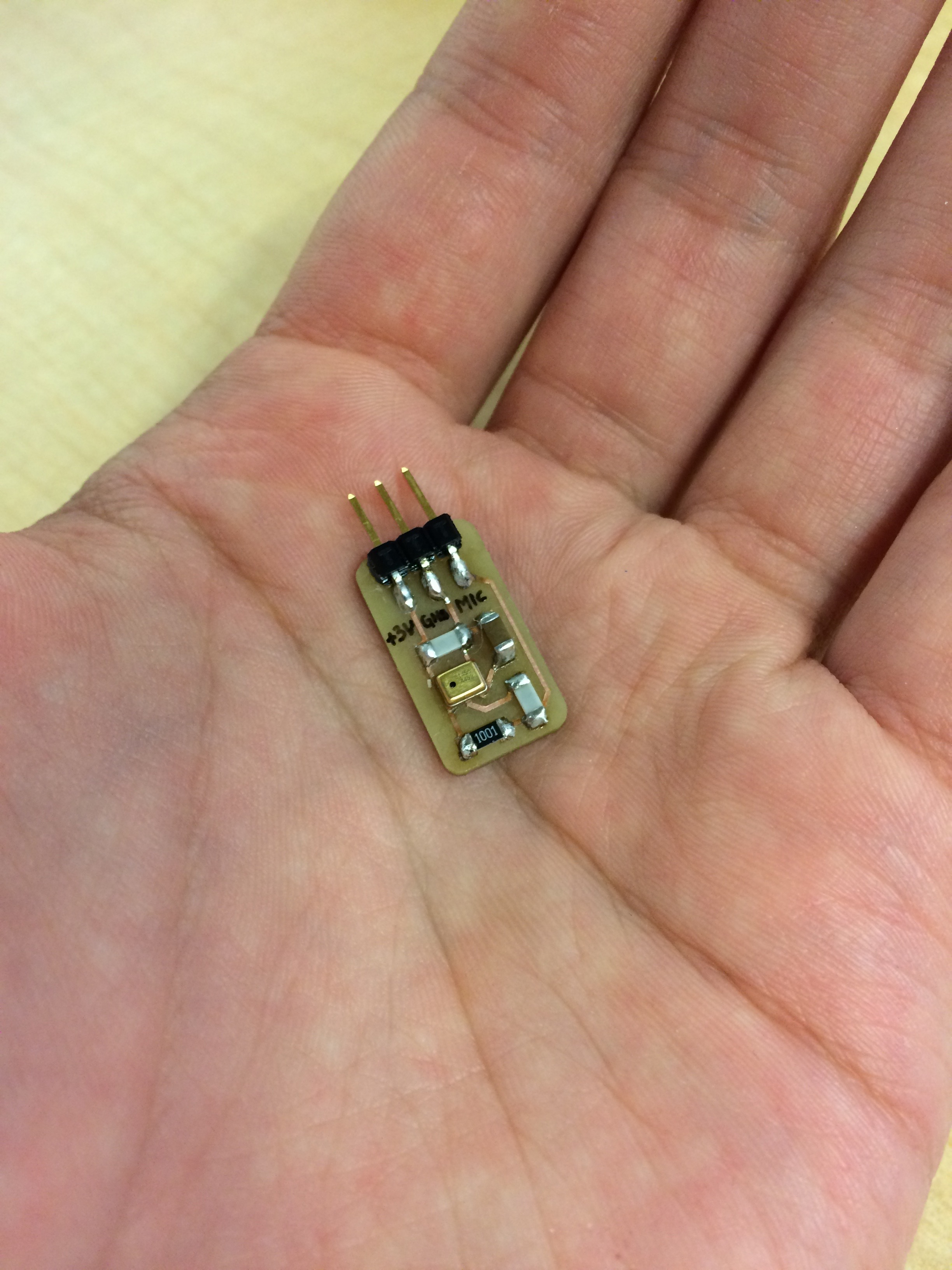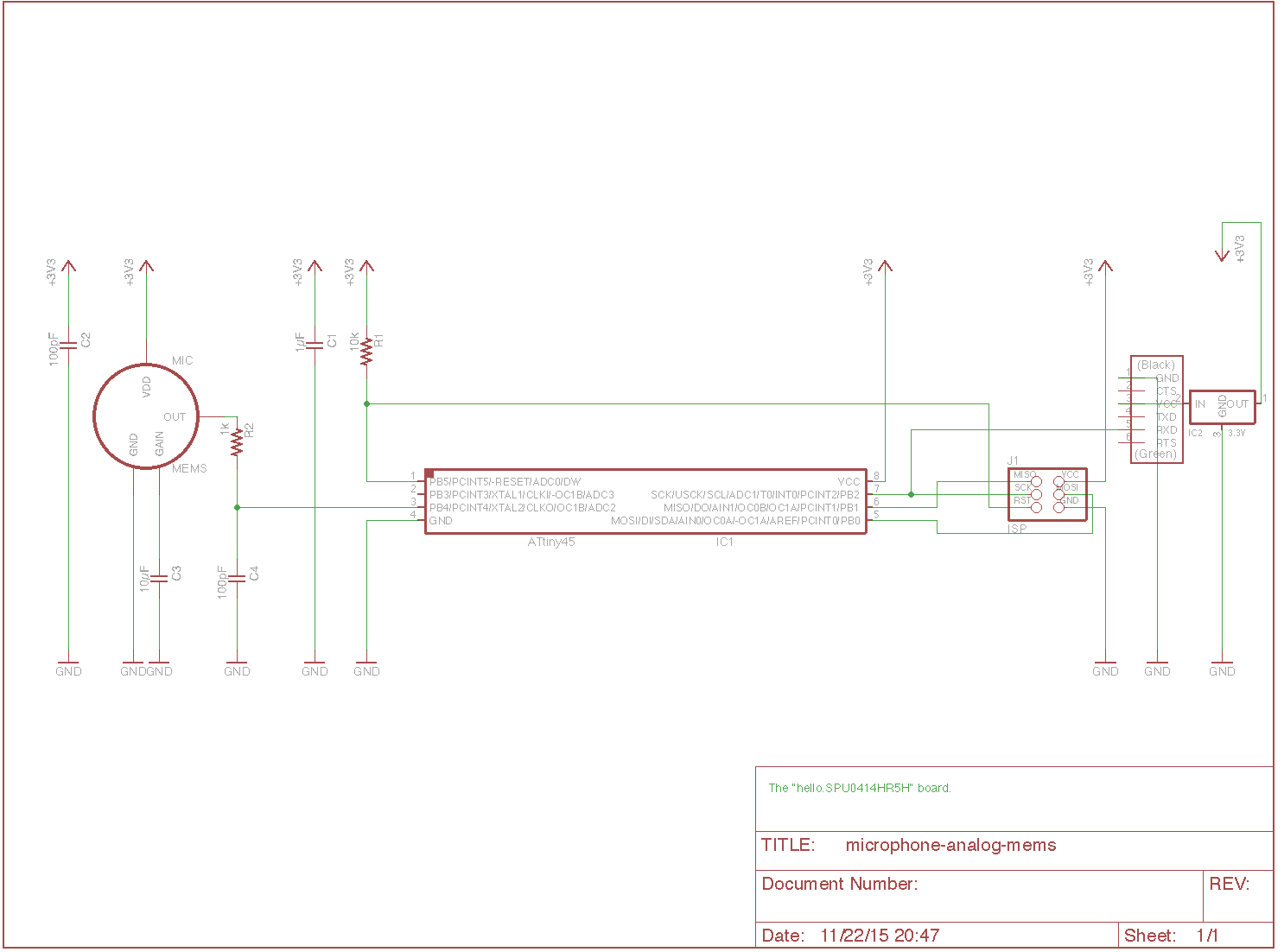Input Devices
Mini Breakout Sensor Board With Analog MEMS Mic
I plan to use these mini sensor boards to measure the noise level in the open-plan office environment. By spreading out multiple of these, the noise level could not only be measured more accurately but also be triangulated by comparing the time stamps. When placing these sensors on walls and ceilings, the data communication and power supply would better be moved to wireless and battery-powered.



Schaaduino
- power via power supply (jack) or 9v battery (vin/gnd leads) -> two regulators (three outs: V+, 3.3V, 5V).. I need two caps for each at the input and the output. look at the datasheet for value.
- power via usb/usb in general
- reusable pins: digital I/O, analog input (Keep analog signal paths as short as possible/Place bypass capacitors as close to VCC and GND pins as possible.)
- LED indicators: one for power, one general purpose one for user (debugging)
- reset button
- serial comm, with rx tx leds (sparkfun?())
- external clock 20MHz ceramic resonator
- 2x3 ISP header
Recitation Welding and Sheet Metal
“It’s one of the most scalable manufacturing processes available, applicable from unit quantities of 1-10000s. Metal sheets are cut then formed into complex geometries allowing thin-walled structures with semi-arbitrary placement of components in 3D space, at scales from millimeters to meters.” Matthew Carney demonstrated how to prototype a simple bracket and the available tools.
 Welding Shop
Welding Shop
Outlook
We use an RC circuit to filter the analog signal from the mic before ADC. Intro to RC circuits. Filter design tool. 1kΩ × 0.1microfarad = 0.0001ms